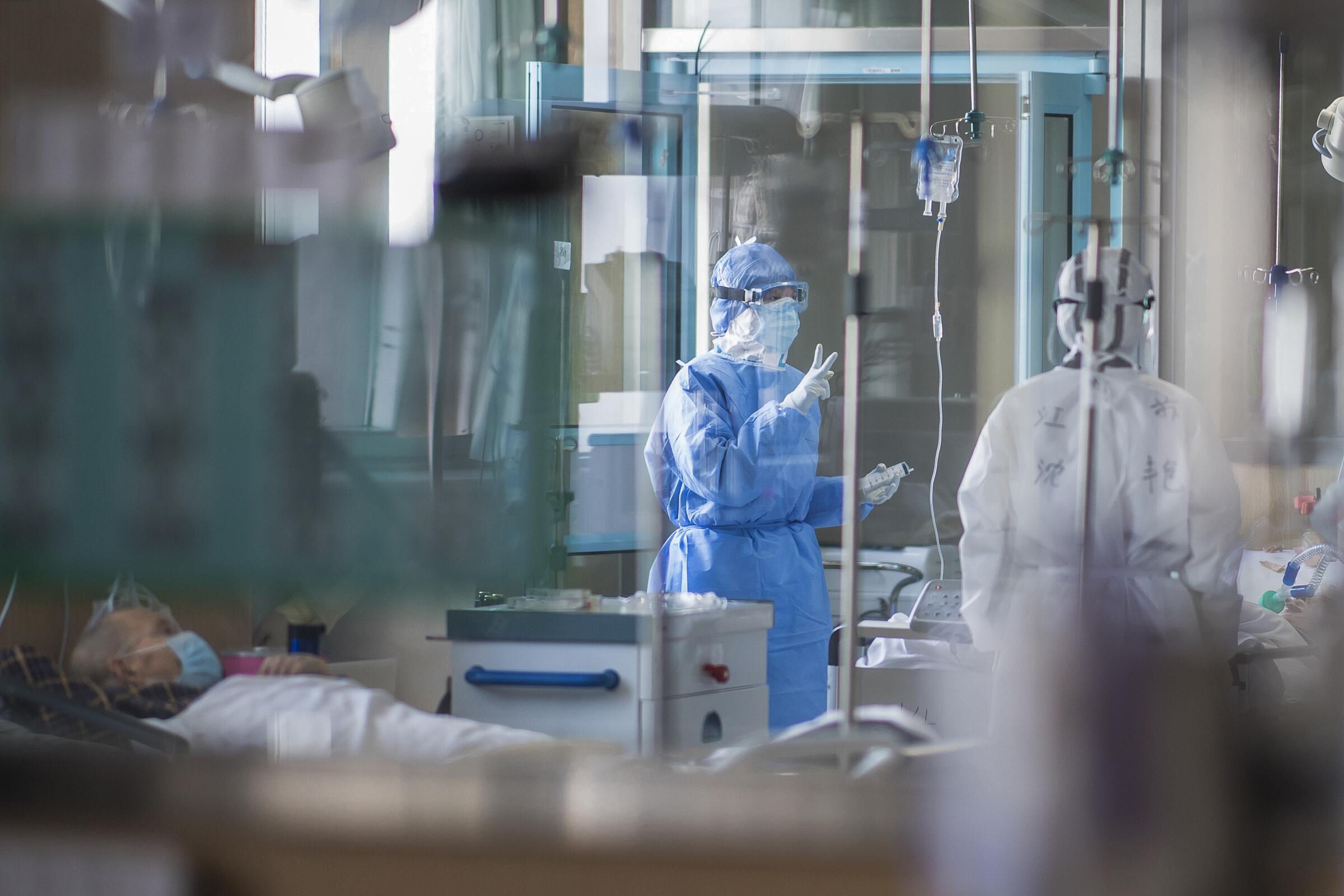Karen Kaplan covers science and medical research for the Los Angeles Times. She has been a member of the science team since 2005, including 13 years as an editor. Her first decade at The Times was spent covering technology in the Business section as both a reporter and editor. She grew up in San Diego and is a graduate of MIT and Columbia University.
1
Sometime in the waning days of 2019, a novel coronavirus began spreading in the Chinese city of Wuhan.
It would take several weeks for local doctors and health officials to realize the new virus was responsible for a spate of mysterious cases of a pneumonia-like illness that did not respond to standard treatments.
As physicians at various hospitals treated a handful of increasingly sick patients, they realized that many of them had ties to the Huanan Market, where live animals were available for sale.
Viruses have been known to jump from animals to humans in markets like this. That makes, the one in Wuhan a prime suspect in the search for the origins of the COVID-19 pandemic.
A close analysis of Wuhan’s earliest COVID-19 cases points to a live-animal market as the most likely source of the novel coronavirus, a study argues.
Michael Worobey, an evolutionary biologist at the University of Arizona, has pieced together clues from earliest days of the outbreak. Writing in the journal Science, he strengthens the case that the Huanan Market was the most likely source of the SARS-CoV-2 virus.
Here’s a closer look at some of the key events.
2
Nov. 18, 2019
The novel coronavirus that is later named SARS-CoV-2 infects a human for the first time. (This date is an estimate.) Whoever this patient is, he or she was probably not admitted to a hospital — and may not have experienced any symptoms of what became known as COVID-19.
3
Dec. 8, 2019
A 41-year-old accountant from Wuhan reports health problems that he attributes to a dental problem related to baby teeth he has not lost, despite his age. This man has been identified as the “earliest” COVID-19 patient, but his first COVID symptoms are still more than a week away.
He later says he may have become infected with the coronavirus while being treated for his dental problem. He lived about 19 miles south of the Huanan Market and had no connection to it.
4
Dec. 10, 2019
Various people associated with the Huanan Market become the first patients hospitalized with a mysterious disease that resembles pneumonia. They are treated at Wuhan Union Hospital.
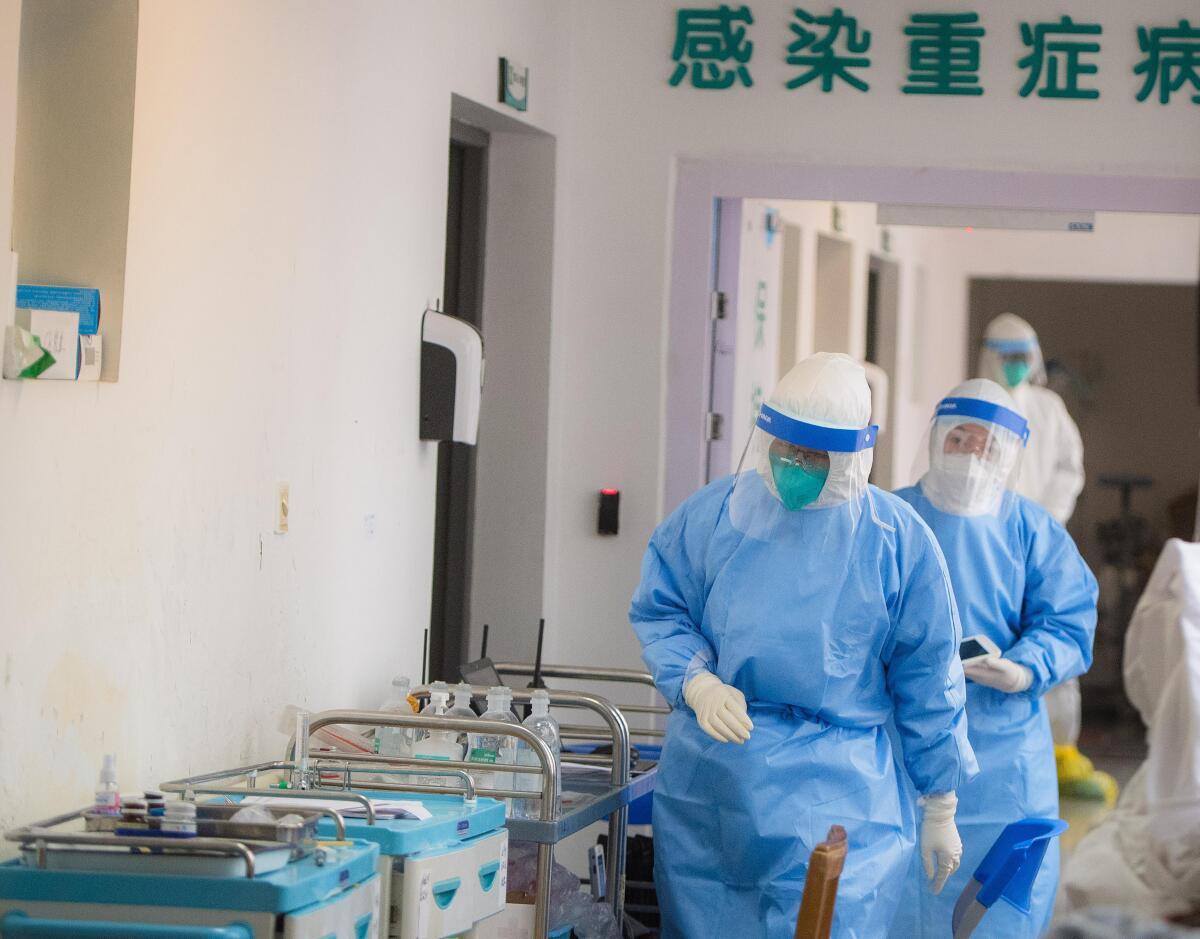
Medical personnel wearing protective suits work in the infectious diseases department at Wuhan Union Hospital.
(Xiao Yijiu / Xinhua via Associated Press)
5
Dec. 11, 2019
A seafood vendor in the Huanan Market develops symptoms consistent with the disease that becomes known as COVID-19. She visits a private clinic at the market and encounters other possible COVID-19 patients there.

A portion of the Huanan Market in Wuhan. A seafood vendor there developed symptoms consistent with COVID-19 on Dec. 11, 2019.
(Dake Kang/Associated Press)
6
Dec. 13, 2019
A 65-year-old deliveryman at the Huanan Market reports symptoms of COVID-19, though the records are unclear and this may have occurred two days later.
7
Dec. 15, 2019
A 62-year-old woman feels initial symptoms of COVID-19.
8
Dec. 16, 2019
The accountant experiences health problems that don’t seem to be explained by a dental problem. “I started having a fever on the 16th, and I would experience tightness in the chest and shortness of breath,” he said.
9
Dec. 18, 2019
Dr. Fen Ai, director of the emergency department at the Central Hospital of Wuhan, treats the 65-year-old deliveryman for unexplained pneumonia. A CT scan shows an infection in both lungs, which did not clear up despite treatment with antibiotics and anti-influenza drugs.
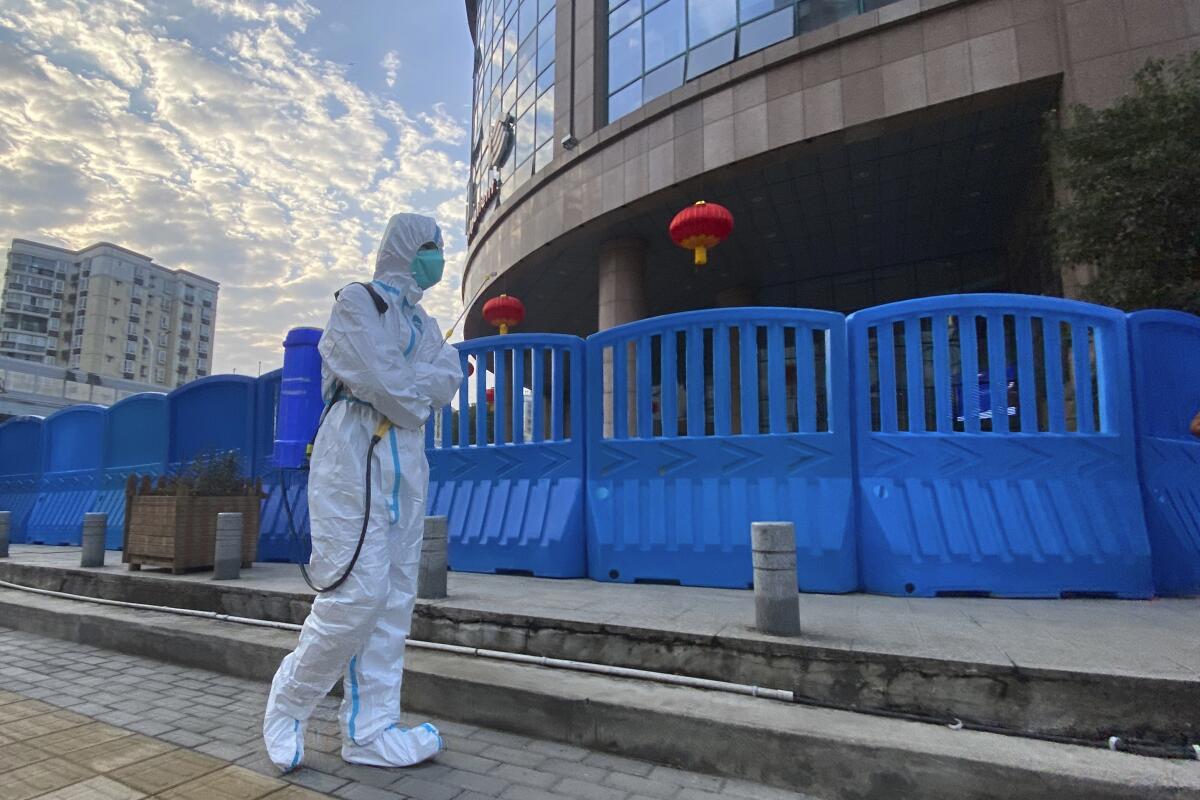
(Ng Han Guan / Associated Press)
10
Dec. 22, 2019
The deliveryman is transferred to the hospital’s intensive care unit.
The accountant is admitted to Jiangxia People’s Hospital.
11
Dec. 24, 2019
A fluid sample from the lungs of the Huanan Market deliveryman is sent to Vision Medicals, a company headquartered in Guangzhou that uses genomics to diagnose infectious diseases.
12
Dec. 26, 2019
The analysis of the deliveryman’s lung sample reveals he is infected with a new coronavirus related to the one that causes Severe Acute Respiratory Syndrome, or SARS. Among all known viruses, the one it’s most similar to is a virus found in bats.
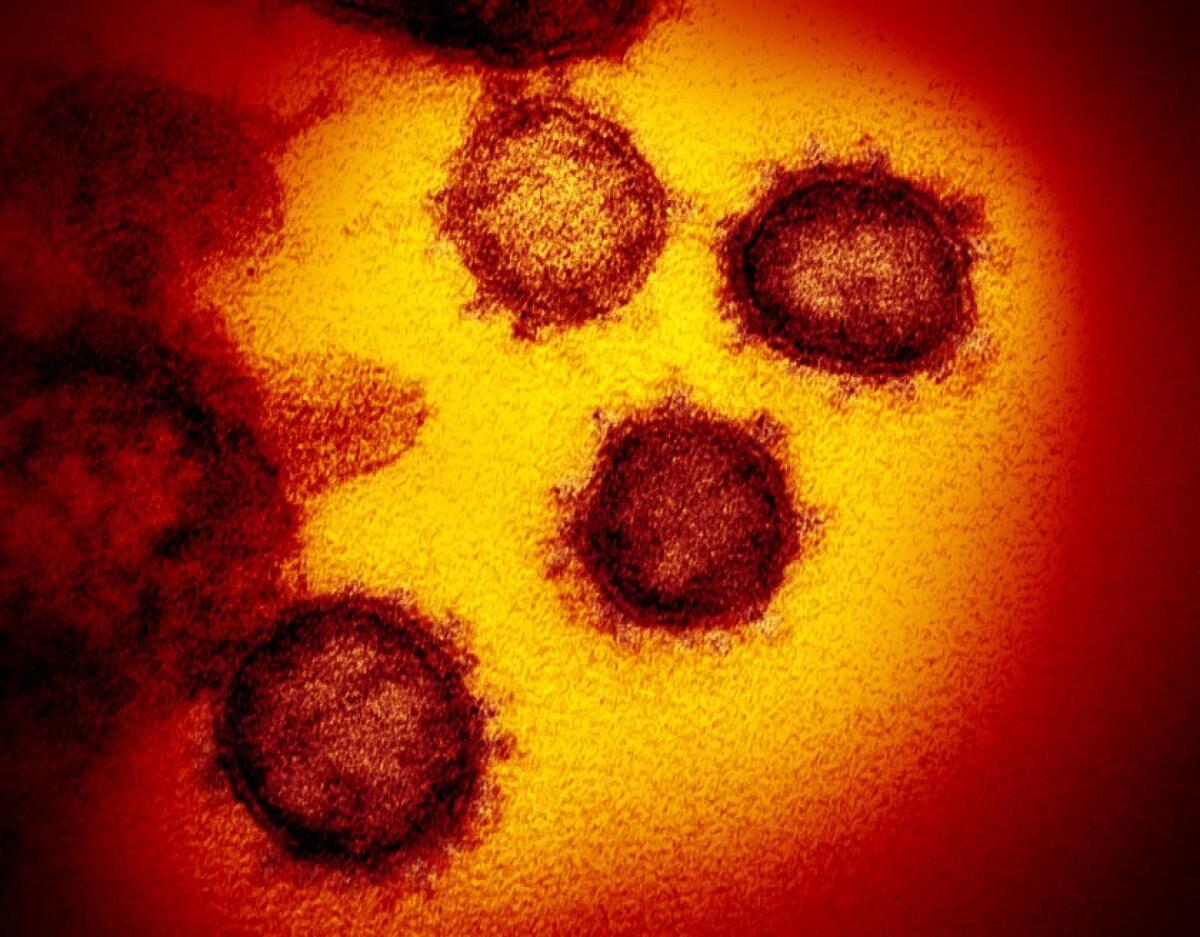
A transmission electron microscope image of the novel coronavirus that became known as SARS-CoV-2.
(National Institute of Allergy and Infectious Diseases Rocky Mountain Laboratories)
The 62-year-old woman who fell ill on Dec. 15 is admitted to Hubei Provincial Hospital of Integrated Chinese & Western Medicine in Wuhan. Her husband is checked into the hospital as well.
A 41-year-old man who worked as a merchant at Huanan Market is admitted to Central Hospital of Wuhan.
13
Dec. 27, 2019
CT scans of the couple treated at Hubei Provincial Hospital reveal “ground glass” opacities in their lungs. Dr. Jixian Zhang, the hospital’s director of respiratory and critical care medicine, insists the couple’s son get a CT scan as well, even though he doesn’t have any pneumonia symptoms. Sure enough, his lungs have the ground glass appearance as well.
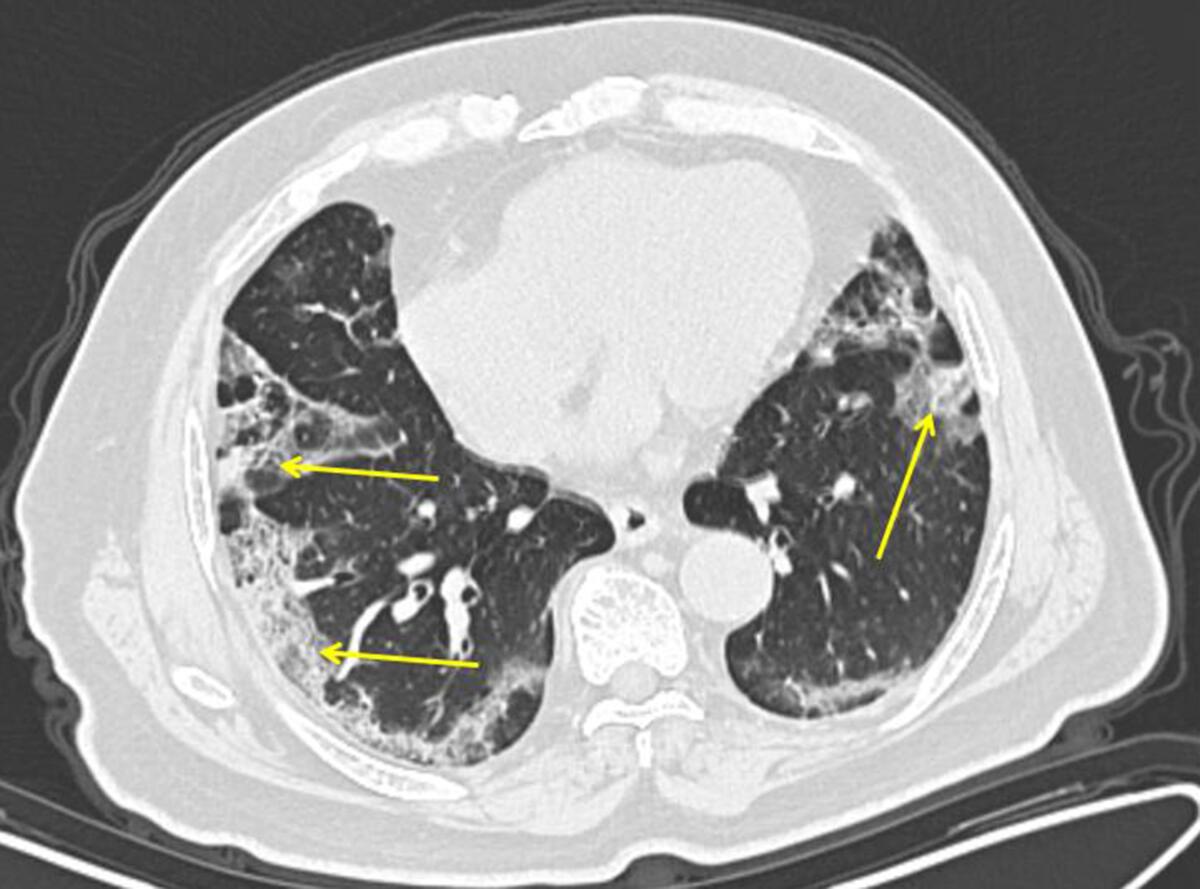
A CT scan from a 65-year-old man in China with COVID-19. Pneumonia caused by the new coronavirus can show up as distinctive hazy patches on the outer edges of the lungs, indicated by arrows.
(Mount Sinai Hospital via Associated Press)
A worker from the Huanan Market with similar CT findings is also admitted to Hubei Provincial Hospital. Zhang reports the four cases to hospital administrators, and they inform the Jianghan District CDC about a new viral disease. They warn that it is probably contagious.
Vision Medicals informs Central Hospital of Wuhan that the 65-year-old deliveryman being treated there is infected with a previously unknown coronavirus. The company produces a nearly complete sequence of the virus’ genome.
14
Dec. 28, 2019
A seventh patient who likely has COVID-19 is seen at Central Hospital of Wuhan.
15
Dec. 29, 2019
Three more patients with ties to the Huanan Market are treated at Hubei Provincial Hospital.
Dr. Wenguang Xia, a vice president at the hospital, convenes an emergency meeting and learns that two other hospitals in Wuhan have seen patients with similar symptoms. Xia informs local and provincial health authorities about the patients and their common link to the Huanan Market.
Government health investigators visit Hubei Provincial Hospital and Central Hospital of Wuhan.
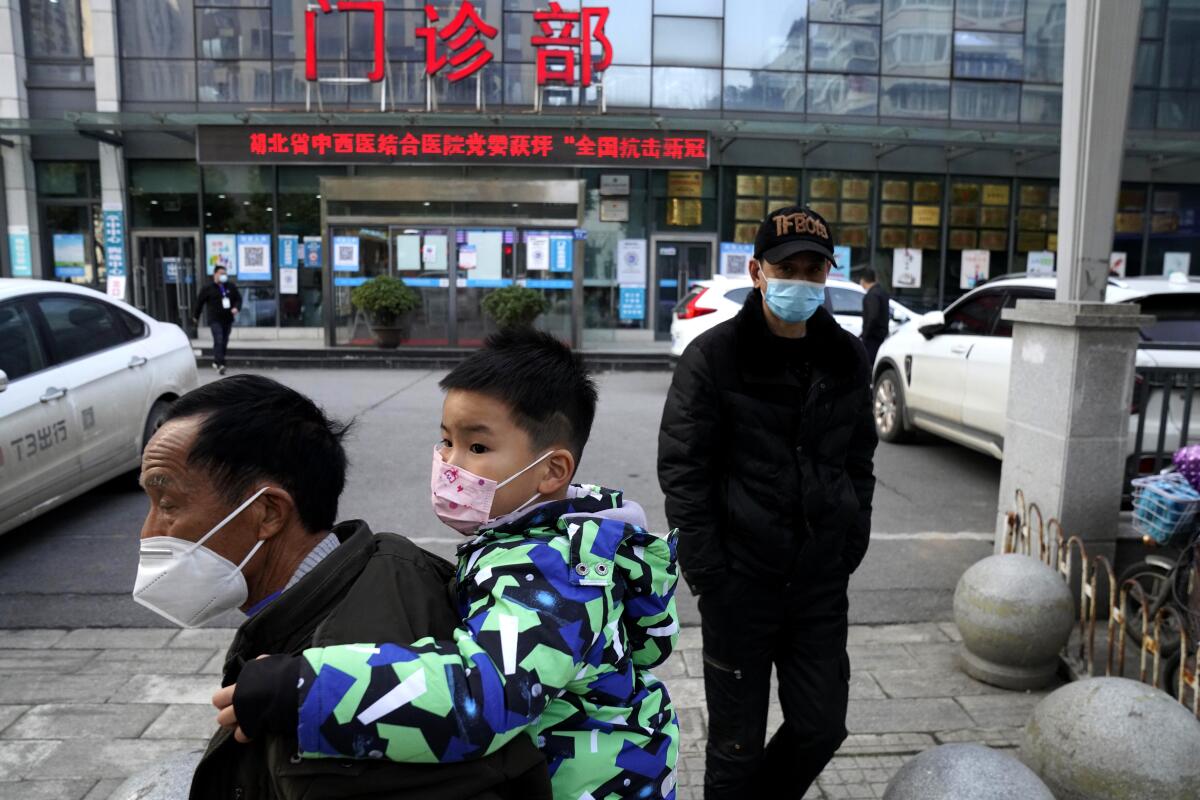
(Ng Han Guan/Associated Press)
16
Dec. 30, 2019
The Wuhan Municipal Health Commission sends an emergency notice to local hospitals, instructing them to report all new cases of patients with the new, pneumonia-like disease.
Word of the notice leaks within minutes and makes its way to George Gao, director of the Chinese Center for Disease Control and Prevention. He informs the National Health Commission about the situation in Wuhan.

(Mark Schiefelbein / Associated Press)
17
Dec. 31, 2019
The National Health Commission dispatches a team to Wuhan.
The Wuhan Municipal Health Commission issues its first public statement about the outbreak, saying 27 cases are linked to the Huanan Market. Local hospitals are credited with identifying the disease and its link to the market.
Dr. Yufeng Yuan, a vice president at Zhongnan Hospital in Wuhan, asks staffers to search their records for patients with unexplained pneumonia. Two are found. Neither patient worked at Huanan Market, but one had been visited at home by friends who did.
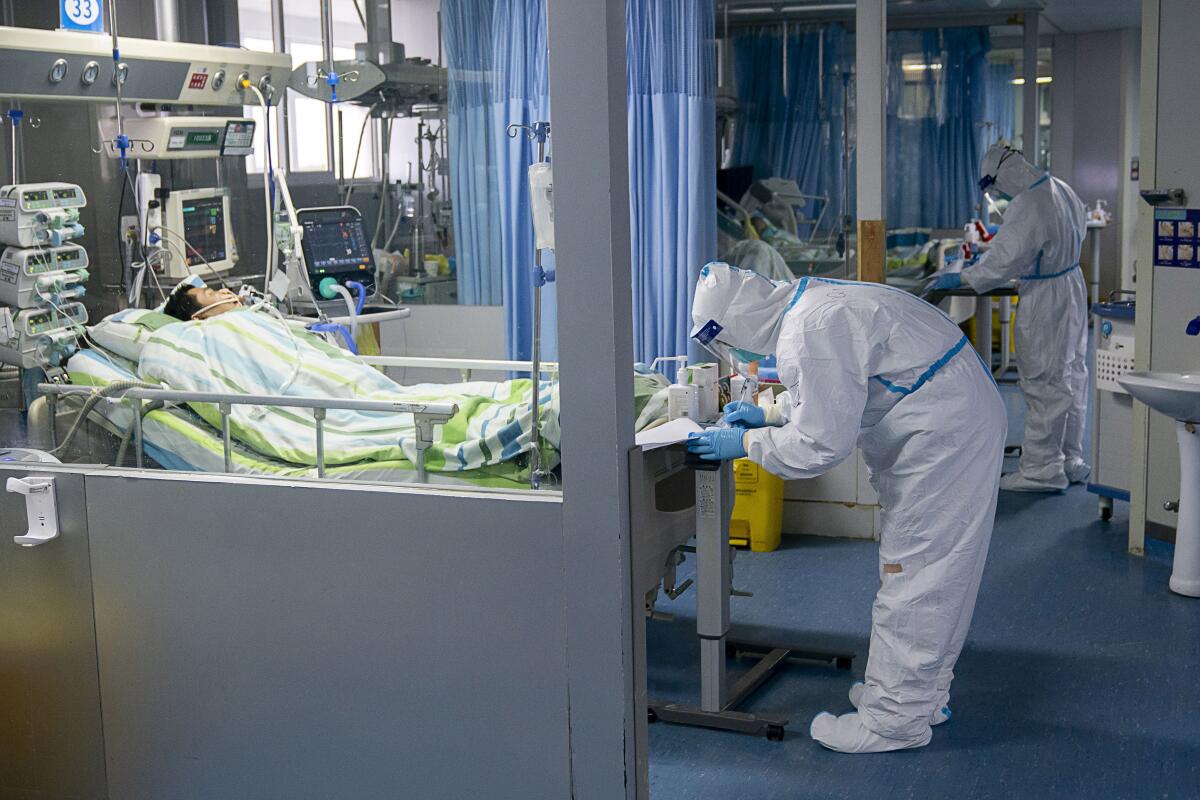
(Xiong Qi/Xinhua via Associated Press)
18
Jan. 1, 2020
The Huanan Market is closed and disinfected. No live animals were screened for the novel coronavirus first. This greatly complicates scientists’ efforts to pinpoint the market’s role in the outbreak.

The Wuhan Huanan Wholesale Seafood Market sits closed in January 2020.
(Dake Kang / Associated Press)
19
Jan. 2, 2020
Yongshen Zhang, a virologist at the Shanghai Public Health Clinical Center, receives a specimen from the 41-year-old Huanan Market merchant. The sample is labeled “Wuhan-Hu-1,” and he gets to work sequencing its genome.
20
Jan. 3, 2020
Three additional patients at Zhongnan Hospital are found to have the unexplained pneumonia. All three are part of a family cluster, and none has ties to the Huanan Market.
The National Health Commission issues a gag order, prohibiting anyone from releasing genomic data tied to the novel virus or the mysterious illness.
21
Jan. 5, 2020
Zhang finishes sequencing the “Wuhan-Hu-1” specimen. He informs the Ministry of Health that the outbreak is indeed due to a contagious respiratory disease and advises the use of protective measures.
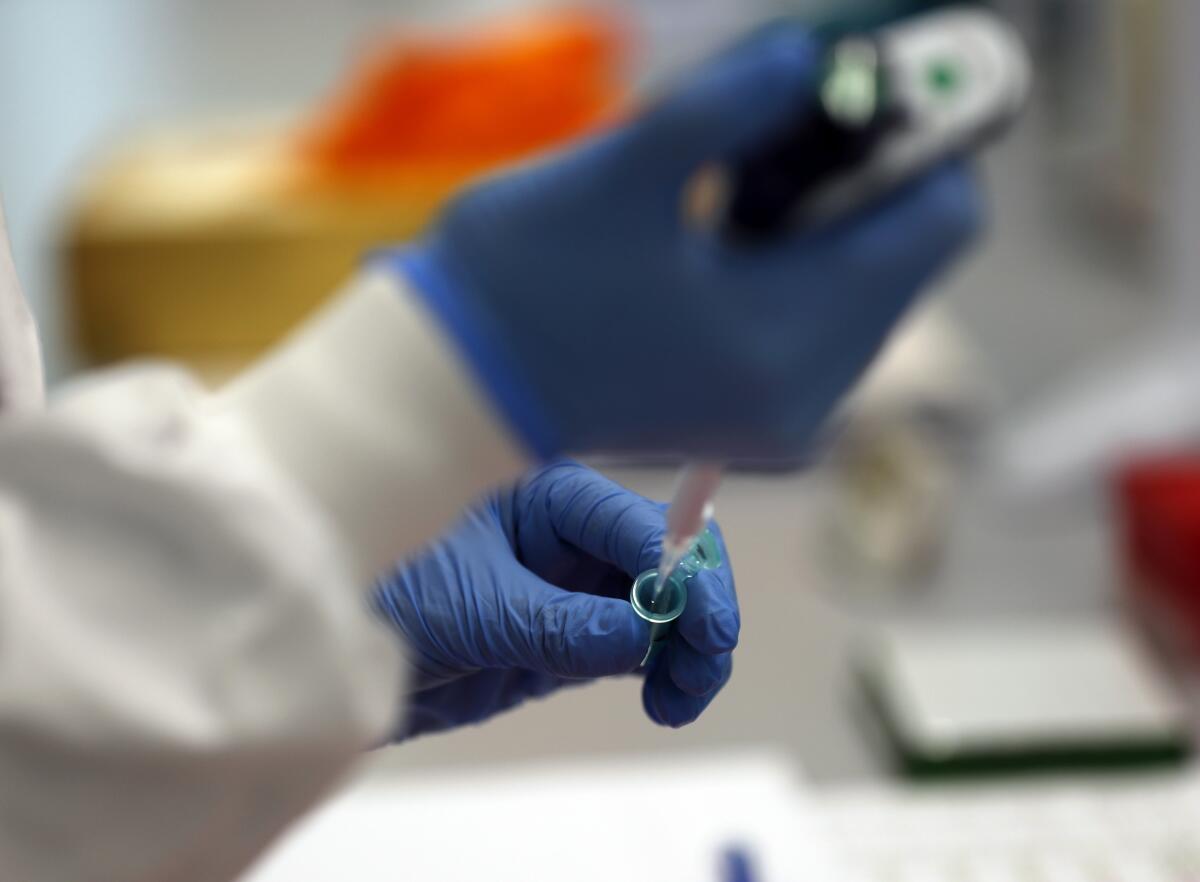
(Frank Augstein / Associated Press)
22
Jan. 11, 2020
Zhang releases the genome of the “Wuhan-Hu-1” specimen, in defiance of the National Health Commission’s gag order.
23
Jan. 20, 2020
The Chinese government confirms that the mysterious new virus can be spread directly from person to person.
